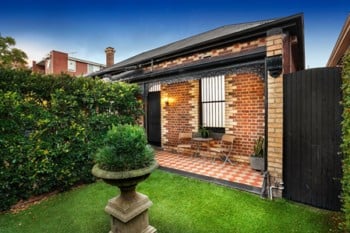By Larissa Gardner, Homely.com.au
For many Australians, the dream of living in and owning their own home seems out of reach at the moment, especially with surging property prices across Australia’s capital cities. That’s where the new breed of first home buyers aka ‘rentvestors’ comes in.
A rentvestor is typically a first home buyer who opts to rent where they want to live but can’t afford to buy, and buys an investment property somewhere more affordable further afield.
The growing trend of rentvesting is helping many first home buyers get a foothold in the Australian property market. According to Mortgage Choice’s 2015 Investor Survey 36.6 per cent of all Australian investors were first home buyers or rentvestors, a significantly higher rate than the 21.2 per cent recorded at the same time in 2014.
To weigh up whether rentvesting may be right for you or not, here are some of the key pros and cons associated with this property buying trend.
Pros:
Live it up in the location you want- Obviously one of the most appealing factors of rentvesting is that many homebuyers don’t want to sacrifice their lifestyle (i.e. proximity to work, café culture, CBD nightlife, beaches etc.) in order to become a home owner. Generally speaking, renting in urban inner city neighbourhoods will always be cheaper than buying there because capital growth for property in ‘trendy’ in demand inner suburbs significantly outpaces the rental growth rate. So you can live in your dream location while building up equity and wealth, working towards purchasing your dream home or buying other investments. It’s a win-win!
More flexibility- If you’re an adventurous ‘itchy feet’ type of person, the flexibility and temporary nature of renting gives you more freedom to move around and experience different lifestyles, types of homes and neighbourhoods. As they say a change can be as good as a holiday. This also means that if you need to relocate for your career you have more flexibility in choosing where you live and how long you stay there for.
Potential for additional income- If the rent you have coming in from your tenants is greater than your loan repayments on the investment property you’ll benefit from additional income. You could use this to save for a holiday, pay off student loans, on everyday living expenses or to fast track your mortgage repayments. In an ideal scenario you want to have a negatively geared investment property where you don’t have to pour large amounts of your own capital into sustaining your assets base each month.
Handy tax deductions- As property investment affords many benefits to the economy and real estate market, the Australian Taxation Office (ATO) provides a number of appealing tax benefits to property investors that are not available to owner occupiers. For instance, according to the ATO some of the expenses on an investment property you can claim include:
- water and council rates
- home insurance
- advertising for tenants
- borrowing fees and expenses
- agent fees and commission
- pest control/ cleaning/ gardening
- repairs and maintenance
- depreciating assets
- land taxes
- and interest on mortgage repayments.

For rent: 25 Howitt Street, South Yarra, VIC
Cons:
Renting is always temporary- You have to come to terms that as a renter the home you live in doesn’t belong to you and is only ever a temporary fix. This can be tricky for some, especially if you hate moving or you’re at a point in your life that you want to settle down and put down more permanent roots. Living on a year to year lease isn’t for everyone, so factor the hassle of having to move more frequently and the uncertainty of renting into your decision.
Miss out on the First Home Owner Grant (FHOG)- Remember the FHOG is only available to owner occupier first home buyers who are buying or building a new home, so first time investors miss out. If a buyers’ first purchase is for an investment property, they can still claim the FHOG on their first owner occupier purchase, even if it is actually their second overall property purchase.
Capital gains tax- Unless you live in your investment property for a minimum of 12 months you have to pay capital gains tax when you sell the property.
Limited changes- If you’re into home DIY to make a space your own it may not be desirable to live in rental properties for the long term where you’re restricted by the terms of the lease agreement and unable to make changes to the décor and house itself.
A great tool to check whether you’ll be in a better financial position in the future if you keep renting or if you buy a home is the Westpac Rent vs Buy Calculator.
For some ideas on where to invest check out the 10 hot Sydney suburbs for investment in 2016.
Author bio:
Larissa Gardner is a blogger, social media strategist and marketing coordinator at arguably Australia’s best looking real estate website Homely.com.au. With over 340K listings and 500K local reviews and insights, Homely is a faster and easier way to search for property to buy and rent in Australia. Check out our suburb reviews and Q&A pages to see what everyone is talking about!
